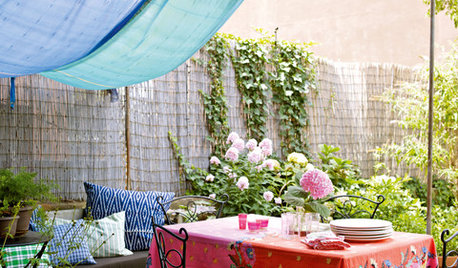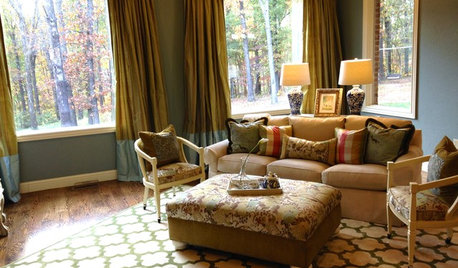Help with Centipede problem
soup006
12 years ago
Related Stories

HOME TECHTurn 'Obsolete' Tech Into Fun Home Help
Here's how to put your old Mac, Atari or Newton to work around the house
Full Story
VALENTINE’S DAY5 Relationship Problems Solved by Design
Everyday issues driving you and your special someone apart? These design solutions can help mend your together time
Full Story
LIVING ROOMSA Living Room Miracle With $1,000 and a Little Help From Houzzers
Frustrated with competing focal points, Kimberlee Dray took her dilemma to the people and got her problem solved
Full Story
SHOP HOUZZShop Houzz: Small Spaces? No Problem
Save up to 70% on furniture perfect for snug living
Full Story0

GARDENING GUIDESSolve 3 Common Landscape Problems — With More Plants
Sometimes the best defense is a good offense
Full Story
FEEL-GOOD HOMEBack Problems? Try Putting Your Feet Up
Consider these alternatives to that one-size-doesn’t-fit-all sofa to avoid slumping and spinal stress
Full Story
CHRISTMAS10 Quick Solutions for Last-Minute Holiday Problems
Sail right by potential decorating, hosting and gift-giving pitfalls with these invaluable nick-of-time tricks
Full Story
REMODELING GUIDESThe Hidden Problems in Old Houses
Before snatching up an old home, get to know what you’re in for by understanding the potential horrors that lurk below the surface
Full Story
HOUSEKEEPING10 Problems Your House May Be Trying to Show You
Ignore some of these signs and you may end up with major issues. We tell you which are normal and which are cause for concern
Full Story
LANDSCAPE DESIGNProblem Solving With the Pros: How to Build a Garden in an Urban Canyon
Skyscrapers, noise and deep shade create an unlikely sweet spot for a timeless green retreat in New York City
Full Story






dchall_san_antonio
soup006Original Author
Related Professionals
Foothill Ranch Landscape Architects & Landscape Designers · Bridgeview Landscape Contractors · Burien Landscape Contractors · Burlington Landscape Contractors · Deerfield Beach Landscape Contractors · El Reno Landscape Contractors · Ellensburg Landscape Contractors · Morrisville Landscape Contractors · Salem Landscape Contractors · Soddy Daisy Landscape Contractors · West Chester Landscape Contractors · Charlottesville Swimming Pool Builders · Conroe Swimming Pool Builders · Glenn Heights Swimming Pool Builders · Rancho Cordova Swimming Pool Builderssoup006Original Author
texas_weed
soup006Original Author
dchall_san_antonio
soup006Original Author